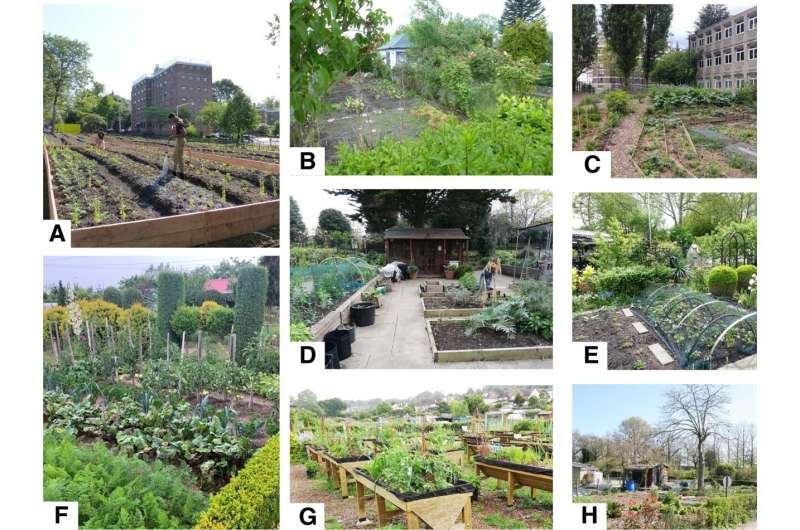This article has been reviewed according to Science X's editorial process and policies. Editors have highlighted the following attributes while ensuring the content's credibility:
fact-checked
trusted source
proofread
Gauging the environmental impact of urban farms and gardens

Urban agriculture is rapidly growing in cities across the global north, but without data on its environmental impact, it's all but impossible to craft policies for sustainable urban food production.
To address this gap, an international team of researchers including Associate Professor Nevin Cohen studied a large, diverse sample of urban farms and gardens in five countries and generated a uniquely powerful dataset for understanding the relationships between urban farm and garden yields, resource use, and urban farmers and gardeners.
The researchers used a citizen science approach to collect data from 72 urban agriculture sites in France, Germany, Poland, the United Kingdom and the United States. They found that resource use and yields varied widely, and that climate and location could not explain most of the differences. Farm type, such as collective garden, individual, garden or urban farm, could explain differences in several dimensions of resource use, but failed to predict production potential. The most important differentiator appeared to be collective versus individual management.
Yields at many well-managed urban farms exceeded those of conventional rural farms, and the farms in the sample contributed significantly to local biodiversity, with an average of 20 different crops per farm not including ornamental plants.
Aside from clarifying important trends in resource use at urban farms, the study also raises numerous questions about how crop selection and growing practices influence the environmental impacts of growing food in cities.
"Working closely with the people implementing these practices, we can better understand what drives the environmental performance of urban agriculture," Dr. Cohen says. "Ultimately, research like this is vital for supporting policymaking that enables urban agriculture that is good for cities, citizens and sustainability."
The research is published in the journal Agronomy for Sustainable Development.
More information: Erica Dorr et al, Food production and resource use of urban farms and gardens: a five-country study, Agronomy for Sustainable Development (2023). DOI: 10.1007/s13593-022-00859-4
Provided by The City University of New York




















